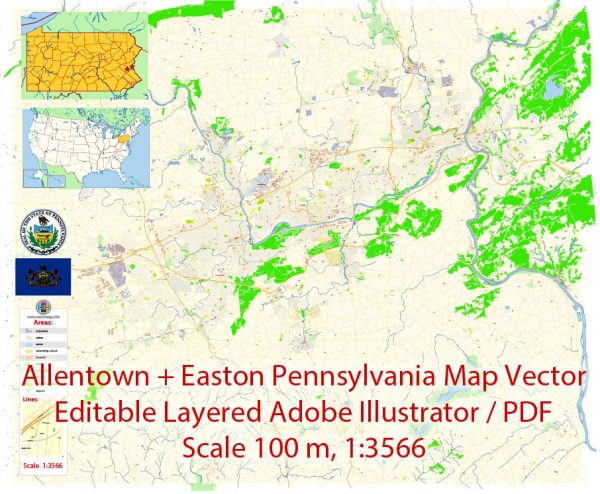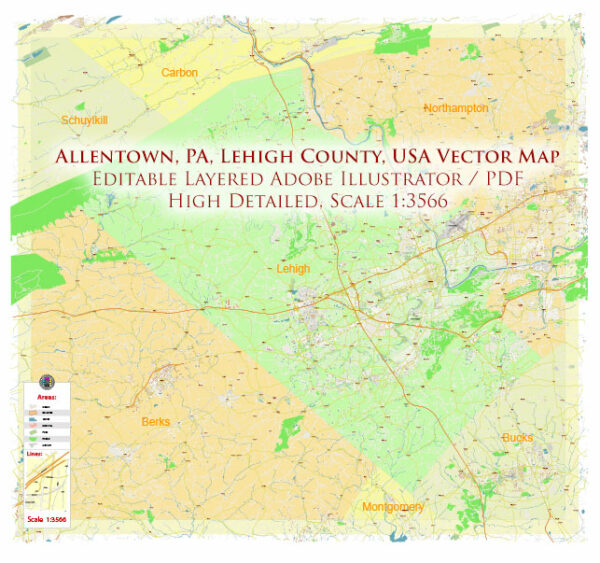The history of urban development in Allentown and Easton, two cities in eastern Pennsylvania, is a story of industrial growth, economic shifts, and revitalization efforts over the years. Here’s a brief overview of their urban development histories:
Allentown:
- Early Settlement: Allentown was founded in 1762 by William Allen, a wealthy shipping merchant. It started as a small agricultural and trading community in the heart of the Lehigh Valley.
- Industrialization: In the 19th century, Allentown saw significant industrialization, with the iron industry being a major driver of economic growth. The city’s proximity to the Lehigh River and the development of the Lehigh Canal played a crucial role in this industrial boom.
- Diversification of Industry: Over time, Allentown’s industrial base expanded to include silk mills, breweries, and the famous Mack Trucks manufacturing plant. This diversification led to increased population and economic development.
- Decline and Revitalization: Allentown’s industrial prominence waned in the mid-20th century, and the city faced economic challenges. In the late 20th century, efforts were made to revitalize the downtown area through urban renewal projects, which included the development of the PPL Center, a multi-purpose arena, and the opening of the Arts Park.
- Present-Day: Allentown continues to evolve as a regional hub for healthcare and education, with institutions like Lehigh Valley Hospital and Lehigh University contributing to its growth. The city has also invested in downtown revitalization projects and cultural attractions.
Easton:
- Colonial Era: Easton, founded in 1752, played a pivotal role in American history as the site of the public reading of the Declaration of Independence in 1776. The city served as a major transportation and trading hub along the Delaware River.
- Industrialization: Like Allentown, Easton also experienced industrial growth in the 19th century, particularly in the production of iron, textiles, and agricultural machinery. The construction of the Lehigh Canal and later, the railroads, boosted the city’s economic development.
- Post-Industrial Transition: Easton, like many industrial cities, faced challenges in the mid-20th century as industries declined. Deindustrialization and urban blight became pressing issues.
- Revitalization: In recent decades, Easton has worked on revitalizing its downtown area. The development of the Crayola Experience, a children’s interactive museum, and the State Theatre Center for the Arts have contributed to the city’s cultural and economic revitalization.
- Heritage Preservation: Easton has also focused on preserving its historical character. The restoration of the Northampton Street Toll Bridge and the creation of the Karl Stirner Arts Trail are examples of efforts to maintain the city’s heritage while promoting cultural and recreational opportunities.
Both Allentown and Easton have evolved from their industrial pasts to become diverse and vibrant communities that blend history with modernity. Their stories reflect the challenges and opportunities faced by many American cities as they adapt to changing economic and societal trends.



 Author: Kirill Shrayber, Ph.D.
Author: Kirill Shrayber, Ph.D.